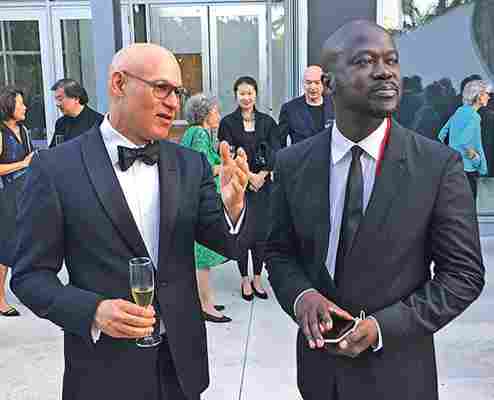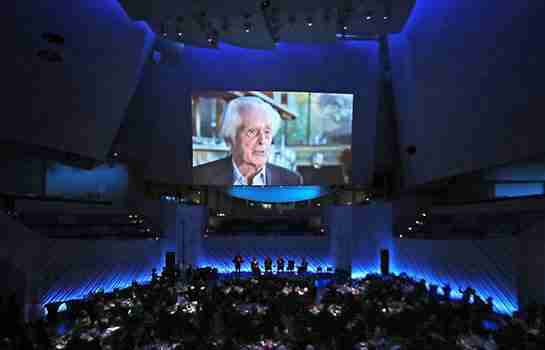On a sultry evening in Miami Beach last Friday, sweltering in black tie, I attended the jubilant award ceremony and dinner honoring the late Frei Otto, the 40th recipient of the Pritzker Architecture Prize, who died this past March at the age of 89, shortly after learning that he had won the world’s most coveted architectural award.
Fittingly, the setting for cocktails was one of Otto's designs, a four-point tensile membrane tent that served as a music pavilion for the 1955 Federal Garden Exhibition in Kassel, Germany, and was re-created for this special occasion. (Commissioned by Miami developer Craig Robins, it will be installed in the Miami Design District later this year.)

Although a modestly scaled example of his oeuvre, Otto’s white pavilion shows his pioneering use of materials and technology to create sustainable architecture, which has inspired a global industry of airy, energy-saving fabric structures.
During an outdoor press conference before the festivities, a distinguished panel of Pritzker laureates and jurors discussed Otto’s work and sang his praises. The group included Shigeru Ban (2014), Norman Foster (1999), Zaha Hadid (2004), Thom Mayne (2005), and Jean Nouvel (2008), along with members of the 2015 prize jury, among them Glenn Murcutt and Richard Rogers (winners in 2002 and 2007, respectively) and Supreme Court justice Stephen Breyer.
Suddenly, a casually dressed man in his late twenties rushed toward the stage, shouting. He was quickly tackled and restrained by security guards who were on hand to protect Justice Breyer and members of the Pritzker family. Undaunted, this apparent heckler yelled a surprisingly pertinent question:
“What relationship existed between Frei Otto and Buckminster Fuller?”
The question was so pertinent that it begged a reply.
“It’s quite a fitting parallel,” Foster responded. As engineer-architects, he noted, both men believed in more with less. “Buckminster Fuller was an original who put his attention to planet Earth, and was concerned with pollution and energy. He was a great visionary. And Frei Otto shares so many of those attributes.”
After the conference Justice Breyer strode over to speak to the “heckler,” who had been deemed harmless and let go.
“I told him it was a good question,” Justice Breyer said to me afterward.

During the awards ceremony that followed at the New World Center (designed by 1989 Pritzker laureate Frank Gehry), we were shown a video of Frei Otto’s last interview, filmed after he was notified of his win. “I have only one dream,” he said, speaking both architecturally and spiritually. “It is the oldest of humanity, of man, in time. It is paradise. I would like to give paradise to everyone.”
The architect’s closing words prompted a few tears among the black-tie crowd as he spoke of the tremendous honor of winning the Pritzker at the end of his life:
“I am a happy man.”
